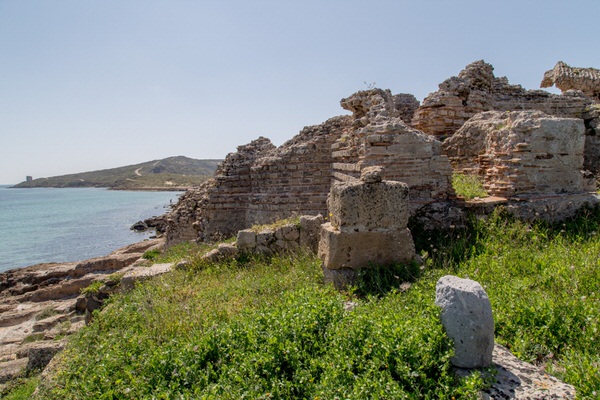The Convento Vecchio Thermal baths
The Convento Vecchio thermal baths, on the eastern shore of the Gulf of Oristano (figs. 1-3) probably take their name from the use of structures in the Late-Ancient Era as the site of a small convent for monks, the only evidence of which may be a Byzantine era tomb found in the apodyterium (fig. 4).




The inner path of the Thermal baths follows the classic circular route, starting with the frigidarium and then ending up there again after passing through the heated rooms (fig. 5).

The building was entered through the changing room (apodyterium) (fig. 6) and from there into the frigidarium (figs. 7-8). This room, square in shape, had two tubs for immersing oneself in cold water: a semi-circular one and a rectangular one.



The heated rooms were reached through the frigidarium, on the eastern side of the building, overlooking the Gulf of Oristano. Erosion from the sea has made most of these rooms collapse, therefore no details can be provided. The northern calidarium (no. 5 on map) still has the praefurnium (figs. 9-10) The route then led back to the frigidarium via a small room to be passed through.
The Convento Vecchio Thermal baths can be dated thanks to a small excavation, the building technique used, the remains of the mosaic in the frigidarium. All these elements lead us to the years of the 2nd and 3rd century A.D.


Bibliografia
- S. ANGIOLILLO, Mosaici antichi in Italia. Sardinia, Roma 1981, pp. 135-137.
- A. R. GHIOTTO, L’architettura romana nelle città della Sardegna, Roma 2004.
- G. PESCE, Tharros, Cagliari 1966.
- R. ZUCCA, Tharros, Oristano 1984.

 VR
VR